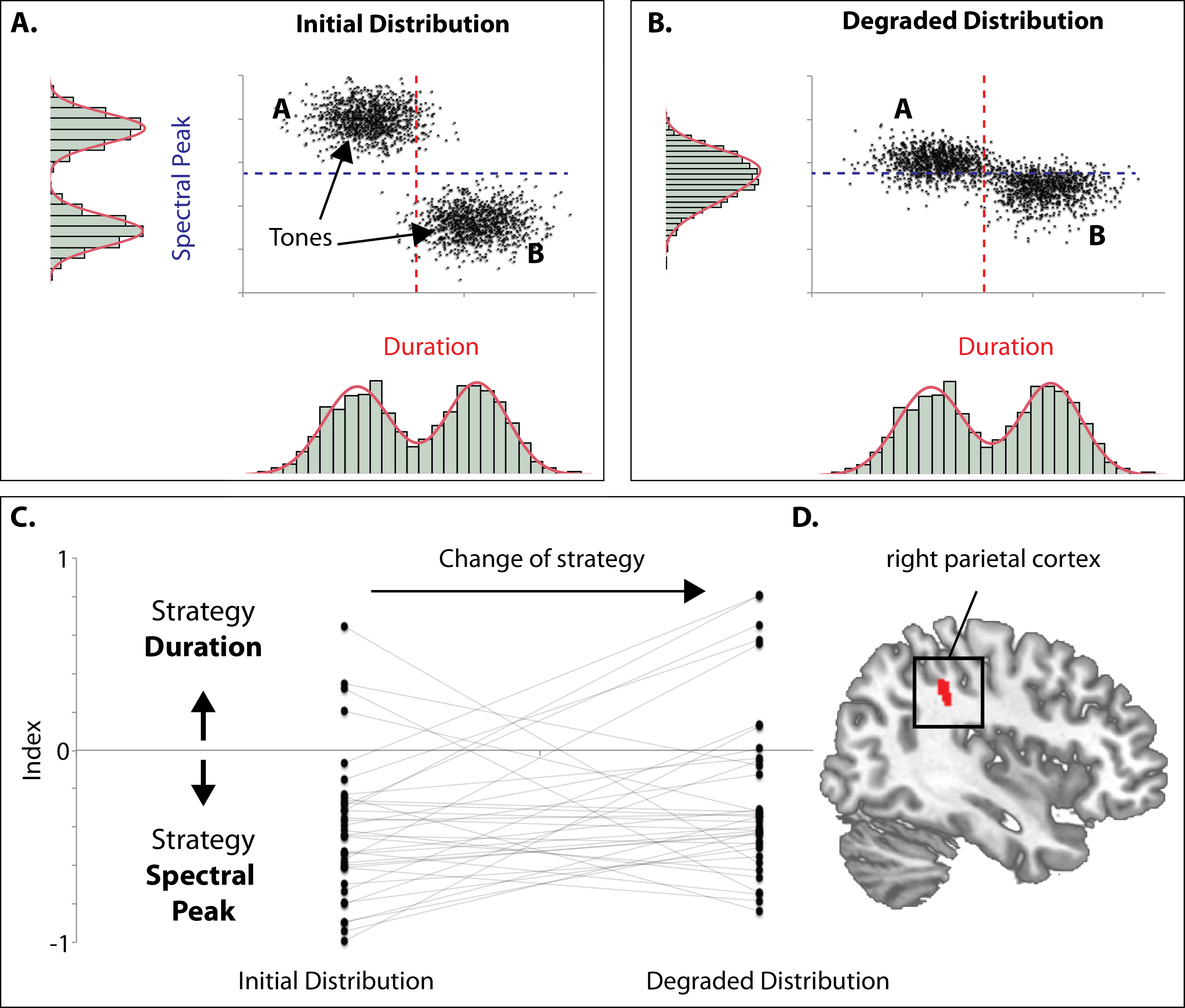Thalamic and parietal brain morphology predicts auditory category learning
Categorizing sounds is vital for adaptive human behavior. Accordingly, changing listening situations (external noise, but also peripheral hearing loss in aging) require listeners to flexibly adjust their categorization strategies, e.g., switch amongst available acoustic cues. However, listeners differ considerably in these adaptive capabilities. For this reason, we employed voxel-based morphometry (VBM) in our study (Neuropsychologia, In press), in order to assess the degree to which individual brain morphology is predictive of such adaptive listening behavior.
Our stimulus material was designed such that optimal categorization was initially based on spectral/frequency cues, but later required relatively more attention to duration cues. Listeners’ strategy use was assessed by logistic regressions. These analyses showed that good performers indeed utilized duration cues to a greater extent in the later part of the experiment than in the beginning. A major result of the whole-brain VBM analysis was that grey-matter volume (probability) of major hubs in selective attention networks (in the inferior parietal cortex; IPL, SMG) was predictive of this switch and utilization of duration cues. In contrast, overall categorization performance was predicted by morphology of auditory thalamus and parts of the pre-motor and motor cortices.
This work extends previous research on brain-structure–behavior relations by combining perceptual response modeling with structural brain measures in order to further the knowledge of how specific acoustic cues (spectral and temporal) are adaptively utilized in domain-general attention (in contrast to domain-specific auditory) networks.
Update:
Paper is available here.
References
- Scharinger M1, Henry MJ2, Erb J2, Meyer L3, Obleser J2. Thalamic and parietal brain morphology predicts auditory category learning. Neuropsychologia. 2014 Jan;53:75–83. PMID: 24035788. [Open with Read]

